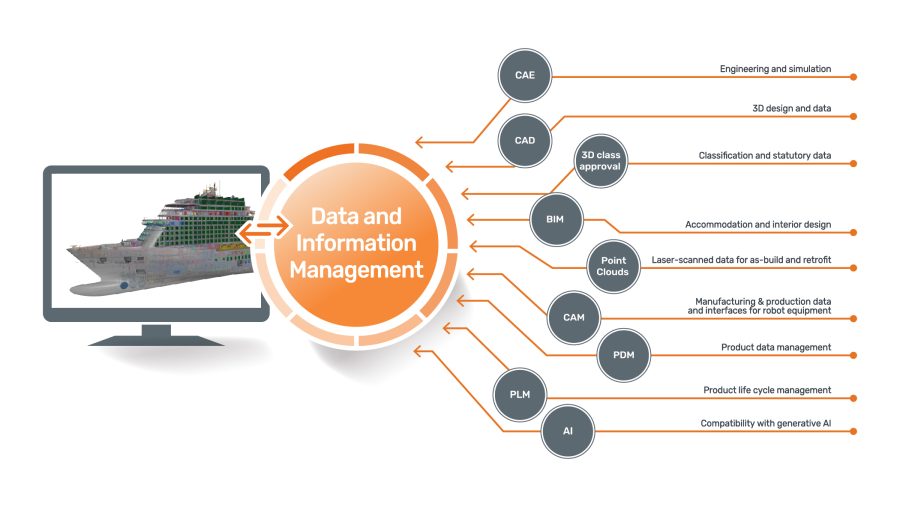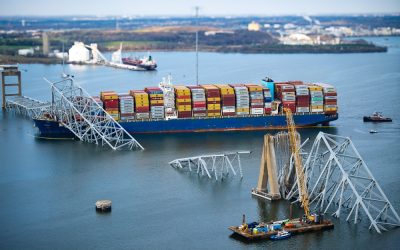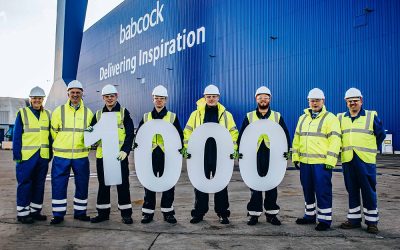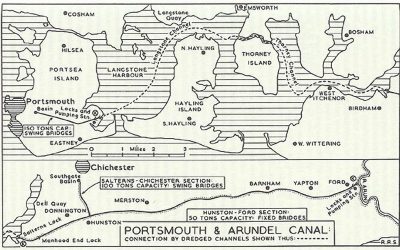Ludmila Seppälä, business development director, Marine Industry, Cadmatic
Interoperability is a key concept frequently mentioned in discussions concerning data exchange and CAD/CAM data formats within shipbuilding. The necessity for data exchange is abundantly clear in shipbuilding projects, given their intricate and protracted nature, requiring the involvement of numerous specialised software systems at various project stages. Flexibility in interfaces with manufacturing systems is crucial. While the idea of a singular, all-encompassing solution for shipbuilding needs remains an aspirational goal, it is unlikely to be achieved due to the inherent complexity of shipbuilding, which involves specialised naval architecture, calculations, simulations, 3D design, diverse manufacturing equipment, and engineers’ preferences, among other factors.
In the typical shipbuilding IT ecosystem, a range of applications must exchange data to support the process and ultimately construct vessels. Consequently, the demand for interfaces and data exchange will remain a top priority for the foreseeable future. This article delves into the underlying processes and highlights various aspects of the ongoing discussion on interoperability within the shipbuilding industry.
The fundamental distinction between interoperability and compatibility lies in the utilisation of data. While compatibility concerns the static aspect of data formats – whether they can be interchanged, imported, exported, or replaced – interoperability goes further by considering the dynamic nature of data use. It examines how data flows can integrate various formats and influence the overall process.
Challenges
Traditionally, CAD/CAM file formats and data structures posed challenges in shipbuilding. These stemmed from vendor-specific data models, often closely guarded by software providers. Each vendor focused on their proprietary solution, making collaboration with external stakeholders like classification societies, subcontractors, equipment manufacturers, and shipowners challenging. This often led to users resorting to 2D documentation exchange or industry-neutral file formats like PDF or DWG. Additionally, there was a need for supporting interfaces and data exchanges with CAM solutions and production MES systems. As digitalisation advanced, it became evident that achieving interoperability required concerted efforts from software solution vendors and promised significant benefits to the industry. The openness of the shipbuilding software solutions supports multi-CAD strategies of companies, provides the flexibility of executing projects involving subcontractors who might use different tools, supports offshoring of production to yards using different CAM solutions, opens the possibility for additive manufacturing and provides potential for facilitation of the digital thread and related new business areas for using the digital assets.
An acknowledged hurdle in shipbuilding is the absence of standardised data structures and taxonomy, which has received less research attention than in industries like mechanical engineering and construction. While attempts to develop neutral formats such as STEP or IGES were made, their compatibility level remained restricted to export/import, failing to preserve topology, interconnections, or support data flows throughout the project life cycle.
Data exchange inevitably carries the risk of data quality degradation. Exporting and importing data often results in losing its “native” characteristics, potentially losing topology information within 3D models, or intentionally simplifying data for specific purposes. The emergence of initiatives like the DNV-led consortium’s Open Class 3D Model Exchange (OCX) holds promise. This initiative aims to transition classification approval from traditional 2D drawings to 3D model-based class approval, potentially becoming an industry-wide neutral format for data exchange.
Data security is a significant concern in data exchange, encompassing data storage and transfer and intellectual property (IP) rights. Shipbuilding 3D models and data often contain innovative solutions that companies must safeguard as their IP. As a result, companies are often hesitant to share these with external parties, including classification societies. 2D drawings are seen as a safer option since reproducing them in 3D requires significant effort. Various methods, including model expiration, data filtering, secure access, legal agreements (like NDAs), and contractual obligations, aim to address IP rights for 3D data. However, it will take time for the industry to develop sufficient trust in these technological measures for data protection.
New business opportunities
Transitioning from a digital model to a digital twin is another consideration that necessitates interoperability and unlocks new business opportunities. This entails mapping 3D and metadata to integrated logistics support, operational data, and IoT for smart shipyard processes during manufacturing and throughout a vessel’s lifecycle. The shipbuilding industry often fails to utilise digital models from the design and production phases in later stages. This creates a gap in understanding the vessel’s as-engineered, as-designed, as-built, and as-is states, complicating lifecycle management and reducing possibilities for data-driven decisions.
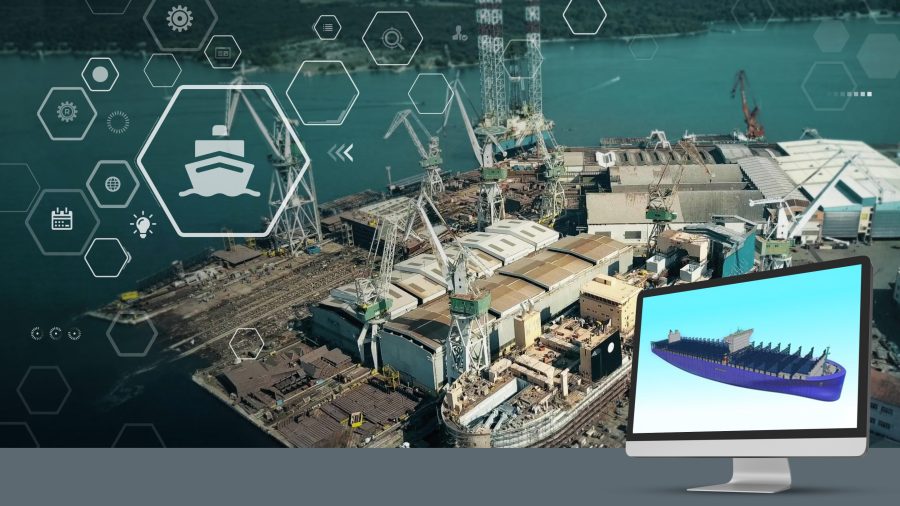
In the typical shipbuilding IT ecosystem, a range of applications must exchange data to support the process
The conversation should focus on data use and digital threads when discussing data utilisation. This involves shipbuilding design methodology, organisational design, information flows, and software solutions in use. The latter can significantly alter a company’s processes and depends on the interoperability of CAD/CAM solutions beyond data format compatibility. While there is a general belief that all project data should ultimately be collected in a central point to form a master data repository, modern IT systems challenge this assumption. Decentralised data storage and context-based data use have gained prominence, necessitating interoperability at the data format and compatibility levels to facilitate data flow design. It might be that sustainable operations and data utilisation would be more resilient if needed, and a class of interoperability would support a decentralised approach. Examples of such systems can be data visualisation based on multiple sources of data, where instead of collecting data in one database, the online connection facilitates the fetch and use of data for the needed operation.
Artificial intelligence (AI) will impact data interoperability significantly in the future. Ongoing studies and examples demonstrate AI’s potential to learn data models and provide mapping for large datasets, offering a potential solution to complex industry problems. The discussion on interoperability will remain pertinent, as data utilisation depends not only on technology and processes but also on human preferences, user experience (UX), and other factors beyond technological advancements. It remains to be seen how AI can perform such tasks while restricted to a limited company’s data sets and if it can operate outside the boundaries of vendor-specific data models.
